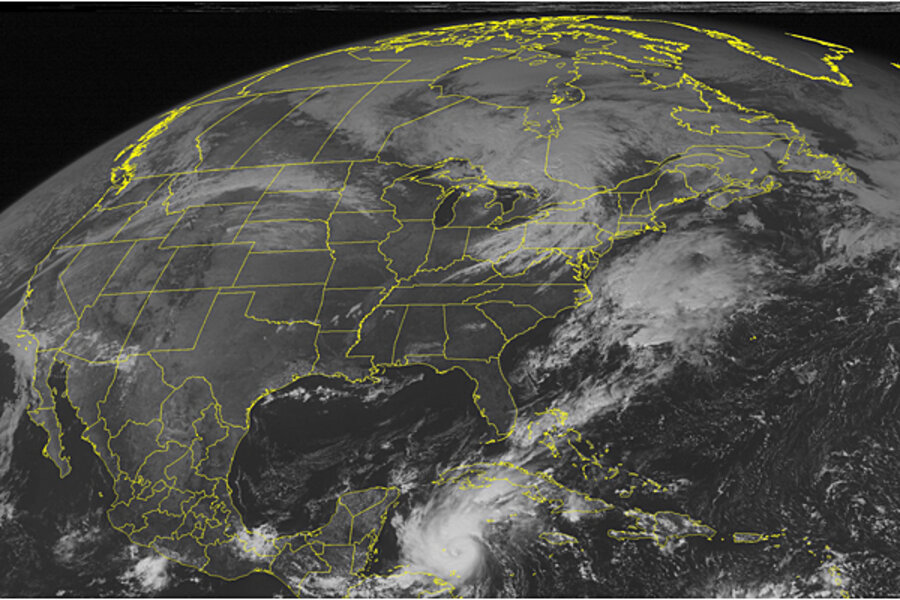Hurricane Rina ramping up quickly in the Caribbean
Loading...
A late-season hurricane – Rina – burst onto the scene Monday afternoon, several days before forecasters had anticipated.
The quick intensification highlights a key challenge that hurricane forecasters face as they try to improve their forecasting efforts: predicting sudden changes in storm intensity. It's a top priority on the national hurricane-research agenda.
Rina's initial move into the meteorological limelight came on Sunday at 5 p.m., Eastern time, when it was "tropical depression 18." By 11 p.m., the storm system strengthened sufficiently to earn a name.
Early Monday morning, forecasters said they anticipated slow strengthening, with Rina becoming a hurricane by Friday. But by 2 p.m. Monday, Rina had spun up with maximum sustained winds of 75 miles an hour – enough to reach hurricane status. Rina now is projected to become a major hurricane, with maximum sustained winds in excess of 110 miles an hour, within the next 48 hours.
The center of Rina currently is located some 207 miles east northeast of Trujillo, Honduras. Current track projections – with large uncertainties at the end of the five-day forecast period – have the center of the storm skirting the northern Yucatán Peninsula on Thursday and Friday before hooking eastward toward the western tip of Cuba.
Two key factors in Rina's spin-up: very warm sea-surface temperatures and a general wind environment that changes little in speed or direction with rising altitude. Such changes, dubbed wind shear, appear to have weakened since early Monday morning, according to forecast discussions. Strong shear tends to stifle hurricane development.
"Rita is in a very good environment" for strengthening, says Dennis Feltgen, a spokesman for the National Hurricane Center in Miami.
Rita is the sixth hurricane of the Atlantic hurricane season, which ends Nov. 30.





